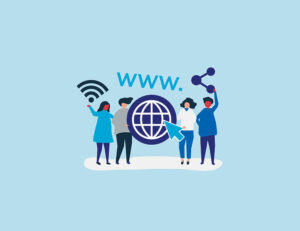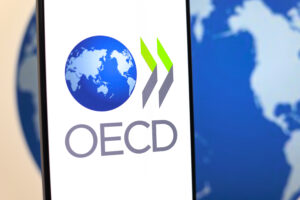From dial-up connections in hefty computer sets to the mobile data on our phones, the internet has evolved how individuals connect, learn, and amuse themselves, as well as how businesses operate and engage with their markets.
One of the earliest forms of internet connectivity is dial-up from the 1990s. Dial-up used telephone lines to connect computers to the internet. It employed modem technology that converts digital data into analog signals, allowing computers to connect to the internet. Typically, a dial-up connection ran at slower speeds by 56 kilobits per second (kbps) — making it time-consuming to perform daily and simple tasks.
The starting point of connecting the Philippines to the global internet can be traced back to the Philnet project, spearheaded by the Department of Science and Technology and the Industrial Research Foundation. This led to the very first internet connection of the country on March, 29, 1994, when former Computer Network Systems Corp., (ComNet) engineer Benjie Tan installed a Cisco 7000 router at the PLDT network center and connected it to Sprint Communications, a US telecommunication services company. The connection was recognized in “The First International E-Mail Conference” held in the University of San Carlos in Cebu after the campus successfully linked up to the connection.
After dial-up, broadband connections started to break through in the Philippines. Broadband technology offers faster internet speeds, starting at 256 kbps and up. More specifically, broadband connections make use of the Digital Subscriber Line (DSL), which transmits data over telephone lines. Alongside faster internet speeds, it also allows users to use the phone line and internet service simultaneously.
The broadband connection is a huge step for digital connectivity, greatly enhancing digital activities such as streaming videos, downloading larger files, and playing online games. This advancement has also spurred growth among services offering reliable broadband connectivity. From upgrading households, broadband connectivity has played a key role in shaping business operations and platforms.
As of 2025, according to Ookla’s Speedtest Global Index, Manila recorded a fixed broadband download speed of 89.96 Mbps and upload speed of 50.33 Mbps. Currently, it is ranked 58th in fixed broadband connection, with a global average of 94.40 Mbps.
“A robust broadband connectivity infrastructure is not just a technological necessity; it’s an essential cornerstone for the Philippines to boost growth and attain its goal of becoming an upper middle-income country in the next couple of years,” Manuela V. Ferro, vice-president for East Asia and Pacific at World Bank, highlighted.
Broadband connections were soon followed by fiber optic internet, known for significantly improved network speeds compared to the earlier internet models. Fiber optic utilizes optic cables that can transmit data rapidly and connect users across the country. The fiber optic serves as data gateways for long distance connectivity and faster internet speeds, reaching up to 1 gigabit per second (Gbps), remarkably augmenting internet services and elevating the overall user experience.
5G network
Also greatly enhancing digital connectivity in the country is the adoption of the fifth-generation cellular technology. 5G now stands as a standard source of internet connectivity that comprises extremely high internet speed, greater internet capacity and expanded bandwidth. In particular, the network can deliver speeds of up to 10 gigabytes per second (Gbps), enhances Internet of Things (IoT) applications, and exceeds over 1 million connections, among other benefits.
Before 5G, earlier mobile network technologies consisted of 1G (first generation), mainly used for voice communication; 2G (second generation), which enabled both voice calls and text messages; 3G (third generation), which provides a network for text, calls, and limited data transmission; and 4G (fourth generation), with access to mobile internet.
5G has advanced these capabilities, providing faster and more reliable connectivity, essential for powering up households and businesses. For instance, it connects businesses to cloud technology, which many are now increasingly utilizing for secure data storage and access.
Also, with sustainability at the core of many business operations, 5G connectivity helps in decreasing carbon emissions and enables a smart, energy-efficient network across sectors. According to Earth.org, when transmitting data, 5G cell sites only consume 15% of energy compared to 4G cell sites. 5G has been seen driving sustainable practices across sectors, including agriculture, energy, manufacturing, transport, and utilities, as shared by global professional services Accenture in a report. More particularly, 5G helps in improving grid optimization and demand for energy-efficient technologies. In agriculture, it is used to power information and communications technology solutions, like automated farming, real-time monitoring, and soil sensors, further minimizing environmental impact of agricultural activities.
Satellite internet
Also becoming more apparent is the utilization of satellite internet in the Philippines. The satellite internet is the kind that uses low earth orbit (LEO) satellites in space to provide internet connectivity. More specifically, it offers broadband internet that supports high-quality streaming, gaming, video calls, and accessing other digital services.
Unlike physical cables or fiber, these satellite constellations transmit data through radio signals in outer space. Because these satellites orbit high above the earth, they provide a vast coverage of internet connectivity, efficiently removing geographical barriers and reaching any location on the planet, be it rural or urban areas.
In recent years, the Philippines used satellite internet to its advantage. For example, it acts as a communication tower in several parts of the country, which in turn, benefits many communities in times of natural calamities. Additionally, it has been leading the way for sector-specific solutions. A report from Philippine Space Agency (PHILSA) indicated that satellite internet is essential for telemedicine, real-time weather data, and submission of data reports to provincial and regional headquarters.
Building on these digital advancements, many non-geostationary satellite orbit service providers are offering satellite internet services to Filipinos. These service providers have employed satellite internet kits in isolated and rural areas of the country.
Other initiatives involve the installation of satellite internet terminals and access points to these rural areas, as part of PHILSA’s Introducing Non-Geostationary Satellite Constellations Test Deployments to Improve Internet Service (INCENTIVISE) project. These initiatives are set to address the country’s digital gaps and improve connectivity and technological capabilities through space technology. — Angela Kiara S. Brillantes






